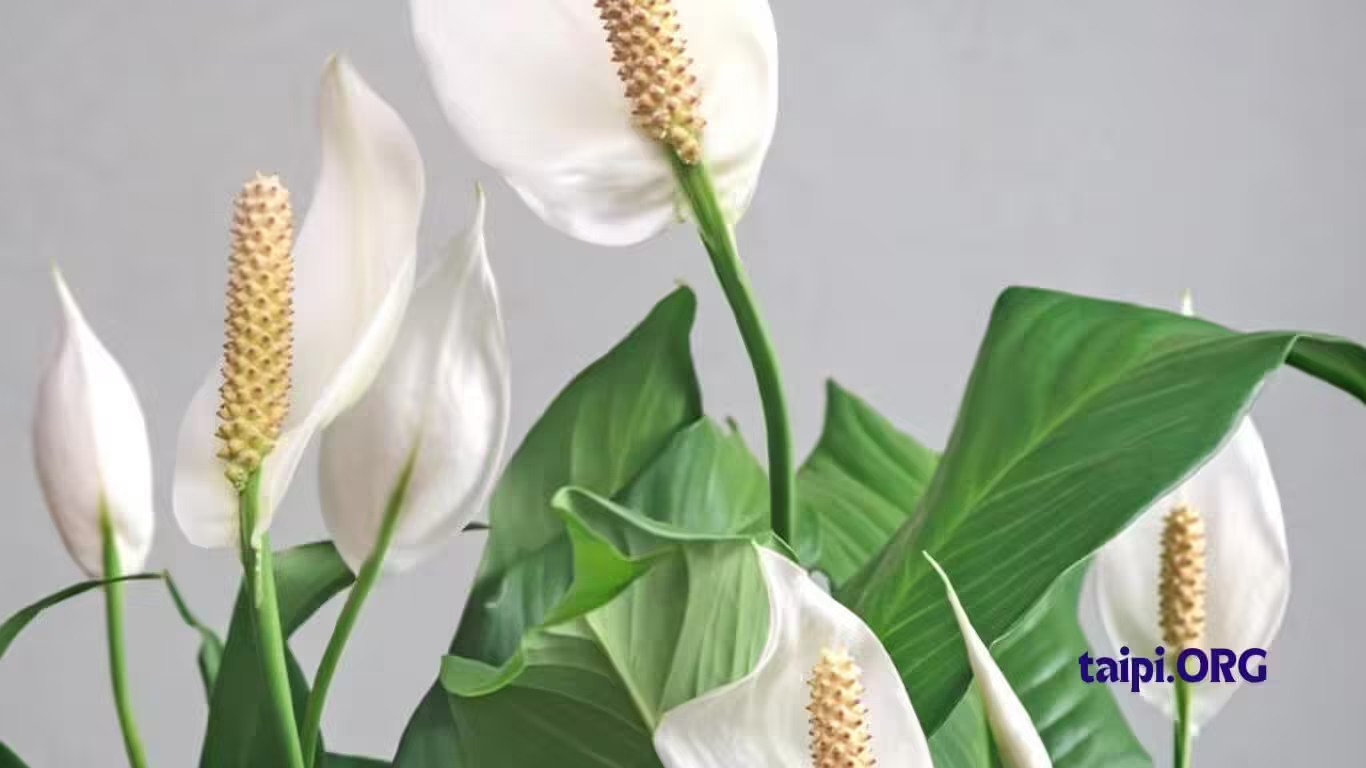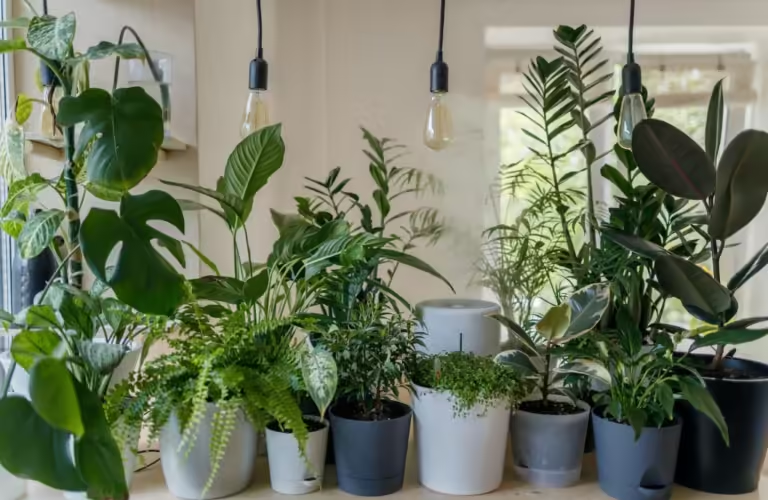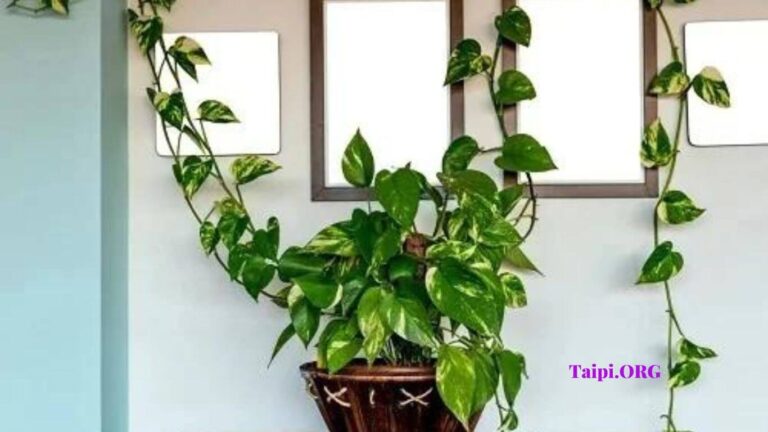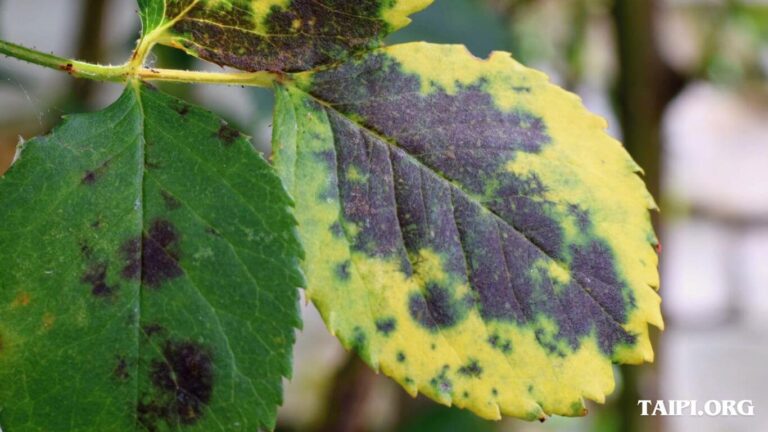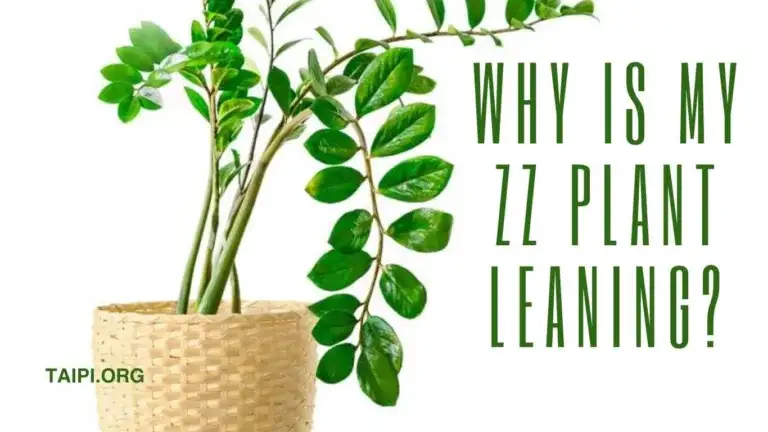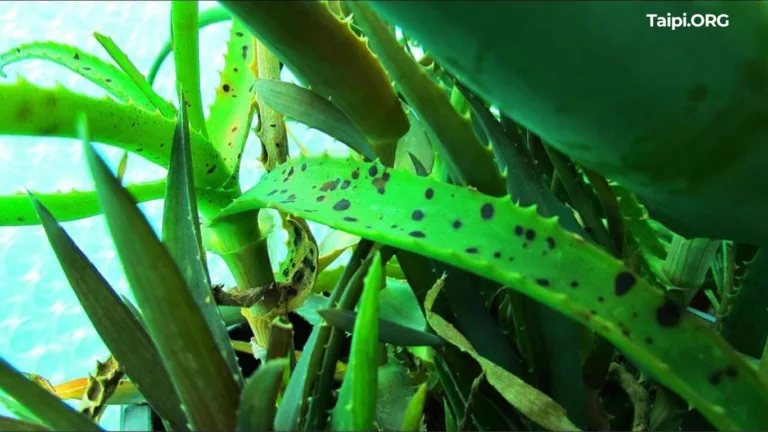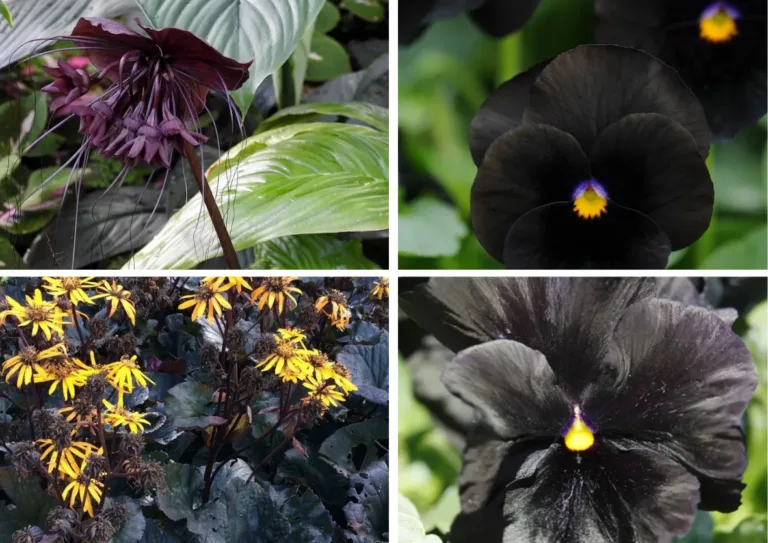Indoor Plant Large Green Leaves: Why You Need Them
ARE you fascinated by indoor plant large green leaves? Indoor plants with large green leaves are popular for home and office decor. They enhance the aesthetic appeal of any space and offer numerous health benefits, such as improving air quality and reducing stress.
These plants vary in shape, size, and texture, but they all share one common feature: large, lush green leaves that create a vibrant and refreshing environment. From the broad, waxy leaves of the Rubber Plant to the delicate, lace-like foliage of the Monstera, each plant has its unique charm and care requirements.
Compare: 15 Indoor Plants with Large Leaves That Don’t Bloom
Benefits of Indoor Plant Large Green Leaves
Here are some of the irrefutable benefits of indoor plant large green leaves:
Air Purification
- Improved Air Quality: Remove pollutants like formaldehyde, benzene, and trichloroethylene.
- Increased Humidity: Maintain indoor humidity levels through transpiration.
Aesthetic Appeal
- Visual Impact: Serve as striking focal points in interior design.
- Versatility: Complement various decor styles, from modern to traditional.
Psychological Benefits
- Stress Reduction: Reduce stress levels and promote calmness.
- Enhanced Creativity and Productivity: Boost creativity and productivity in workspaces.
Health Benefits
- Better Respiratory Health: Improve respiratory health by increasing humidity and filtering air pollutants.
- Healing and Recovery: Accelerate recovery from illness and surgery.
Environmental Benefits
- Sustainable Decor: Provide an eco-friendly way to beautify your home.
- Biodiversity Support: Support indoor biodiversity by providing habitats for beneficial insects.
Functional Uses
- Natural Sound Absorption: Help absorb sound and reduce noise levels.
- Temperature Regulation: Aid in regulating indoor temperatures through evapotranspiration.
Related: 10 Benefits of Indoor Plants
It’s Time to Grow Indoor Plant Large Green Leaves
Now, it’s time to look at each indoor plant with large green leaves, highlighting its brief history, care requirements, and how to propagate indoor plant large green leaves.
1. Monstera Deliciosa

Native to the tropical rainforests of Central America, the Monstera Deliciosa, also known as the Swiss Cheese Plant, is famous for its large, perforated leaves. These dark green, heart-shaped leaves develop distinctive splits and holes as they mature, giving the plant a unique and exotic appearance.
- Sunlight: Bright, indirect light
- Humidity: Prefers high humidity
- Water: Water when the top inch of soil is dry
- Fertilizer: Monthly during growing season
- Propagation: Stem cuttings in water or soil
2. Rubber Plant (Ficus Elastica)
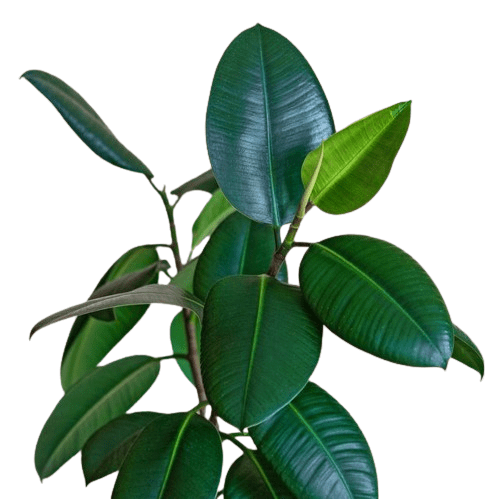
Originating from Southeast Asia, the Rubber Plant features large, glossy leaves that are deep green with a hint of burgundy. The leaves are thick and leathery, providing a bold and striking look to any indoor space.
- Sunlight: Bright, indirect light; can tolerate low light
- Humidity: Moderate to high humidity
- Water: Allow the top layer of soil to dry out between waterings
- Fertilizer: Every two weeks in spring and summer
- Propagation: Stem cuttings
More about Rubber Plant here >>>>>>>>
3. Bird of Paradise (Strelitzia Reginae)
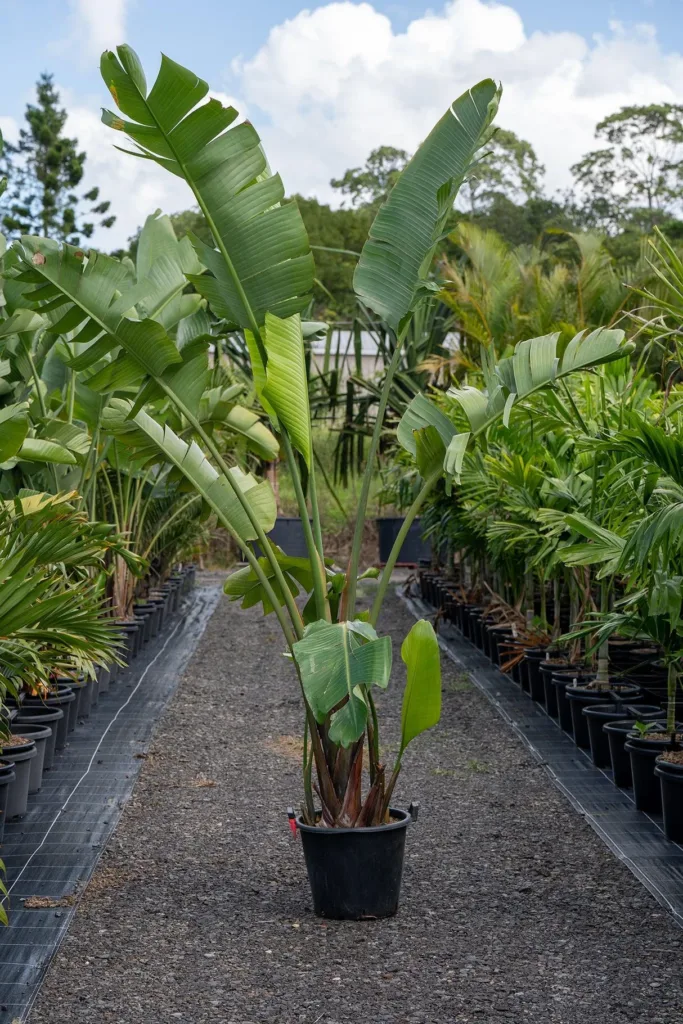
Native to South Africa, the Bird of Paradise plant is known for its large, banana-like leaves, which can reach 6 feet long. The leaves are a rich green and grow upright, adding a tropical feel to any indoor setting.
- Sunlight: Bright light, some direct sun, is beneficial
- Humidity: Prefers high humidity
- Water: Keep soil moist but not soggy
- Fertilizer: Every two weeks during the growing season
- Propagation: Division of rhizomes
4. Philodendron gloriosum
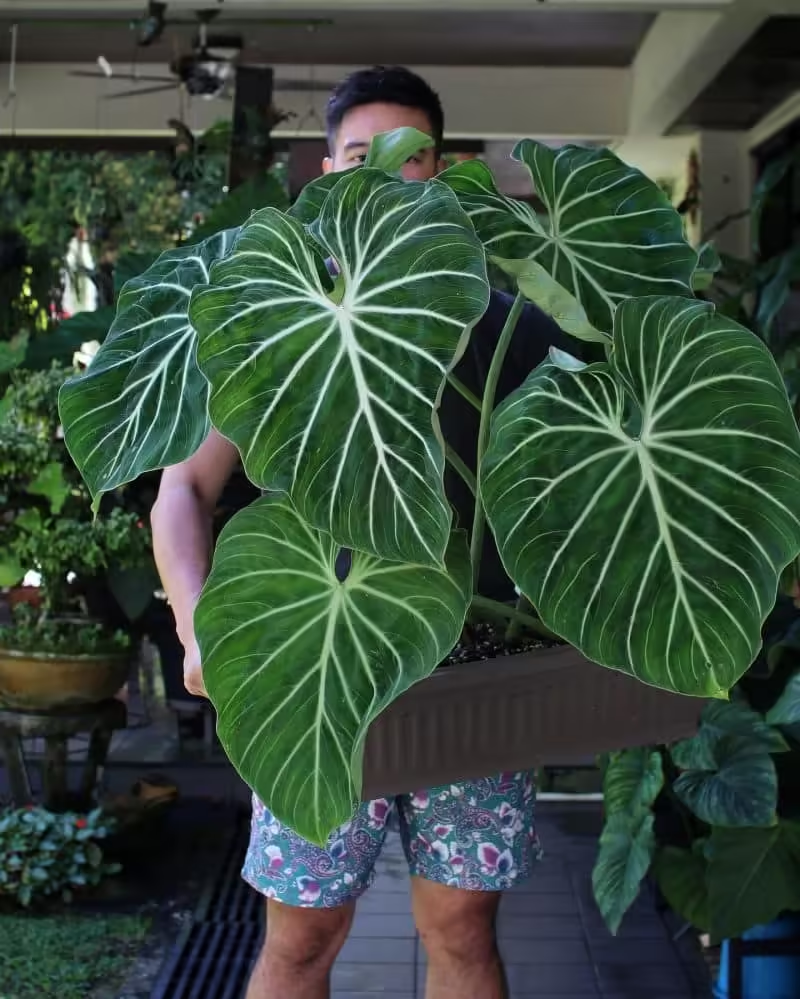
Philodendrons originate from the rainforests of South America. They are characterized by their large, heart-shaped leaves, which are typically a deep, glossy green and can grow quite large, creating a lush, dense appearance.
- Sunlight: Bright, indirect light
- Humidity: High humidity preferred
- Water: Water when the top inch of soil is dry
- Fertilizer: Monthly during growing season
- Propagation: Stem cuttings in water or soil
5. Fiddle Leaf Fig (Ficus Lyrata)
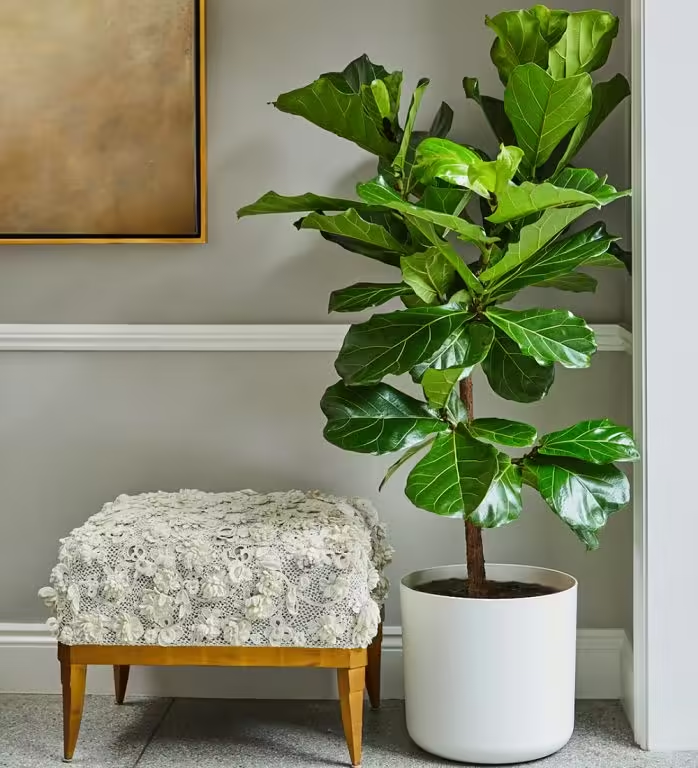
Native to Western Africa, the Fiddle Leaf Fig is renowned for its large, violin-shaped leaves. These leaves are leathery and glossy, with prominent veins that add texture and interest to the plant’s appearance.
- Sunlight: Bright, indirect light
- Humidity: Moderate to high humidity
- Water: Water when the top inch of soil is dry
- Fertilizer: Every two weeks in spring and summer
- Propagation: Stem cuttings or air layering
6. Alocasia (Elephant Ear)

Alocasia plants originate from tropical and subtropical regions of Asia and Eastern Australia. They have large, arrowhead-shaped leaves that can be either green or variegated with striking patterns. The leaves are thick and can grow up to 3 feet long, resembling the ears of an elephant.
- Sunlight: Bright, indirect light
- Humidity: High humidity
- Water: Keep soil consistently moist
- Fertilizer: Every two weeks during the growing season
- Propagation: Division of rhizomes or tubers
7. Peace Lily (Spathiphyllum)
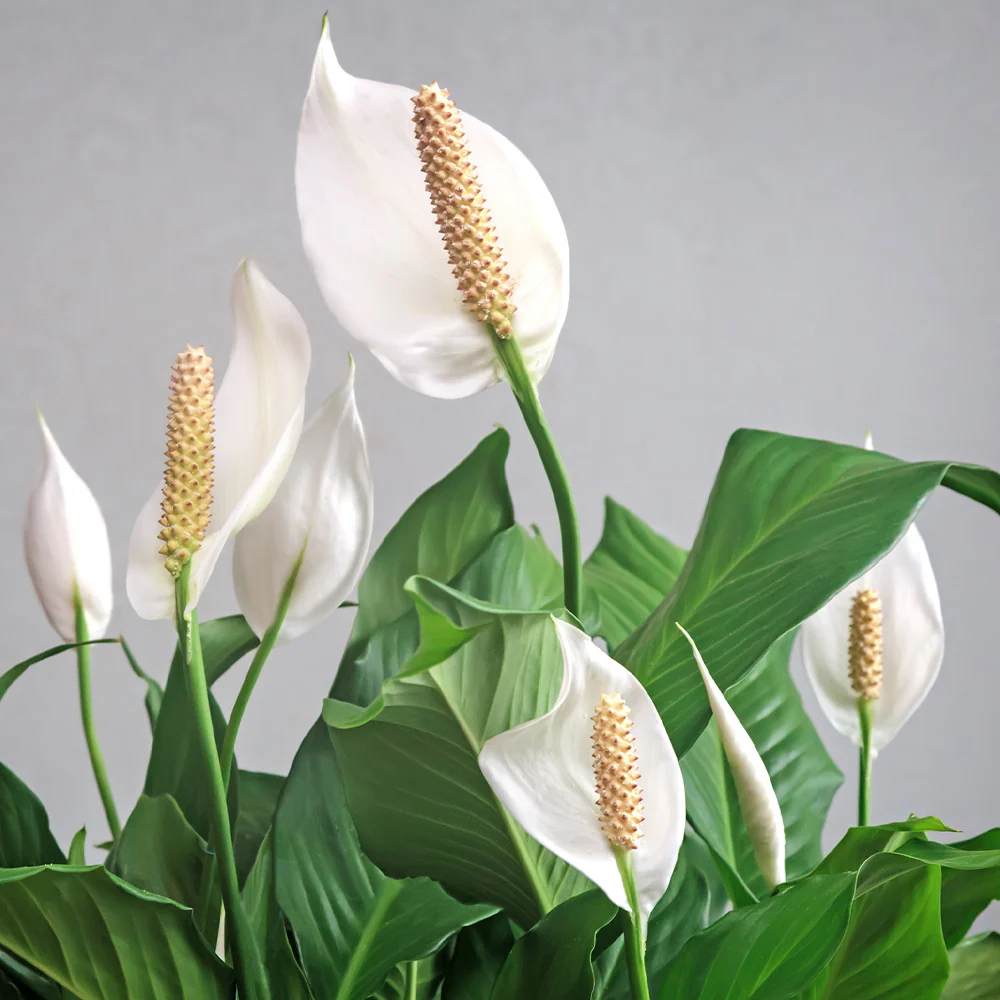
Native to the tropical rainforests of Central and South America, Peace Lilies are known for their broad, glossy, deep green leaves. The plant also produces white, hood-like flowers that add to its elegance.
- Sunlight: Low to bright, indirect light
- Humidity: Prefers high humidity
- Water: Keep soil moist but not waterlogged
- Fertilizer: Monthly during the growing season
- Propagation: Division of clumps
8. ZZ Plant (Zamioculcas Zamiifolia)
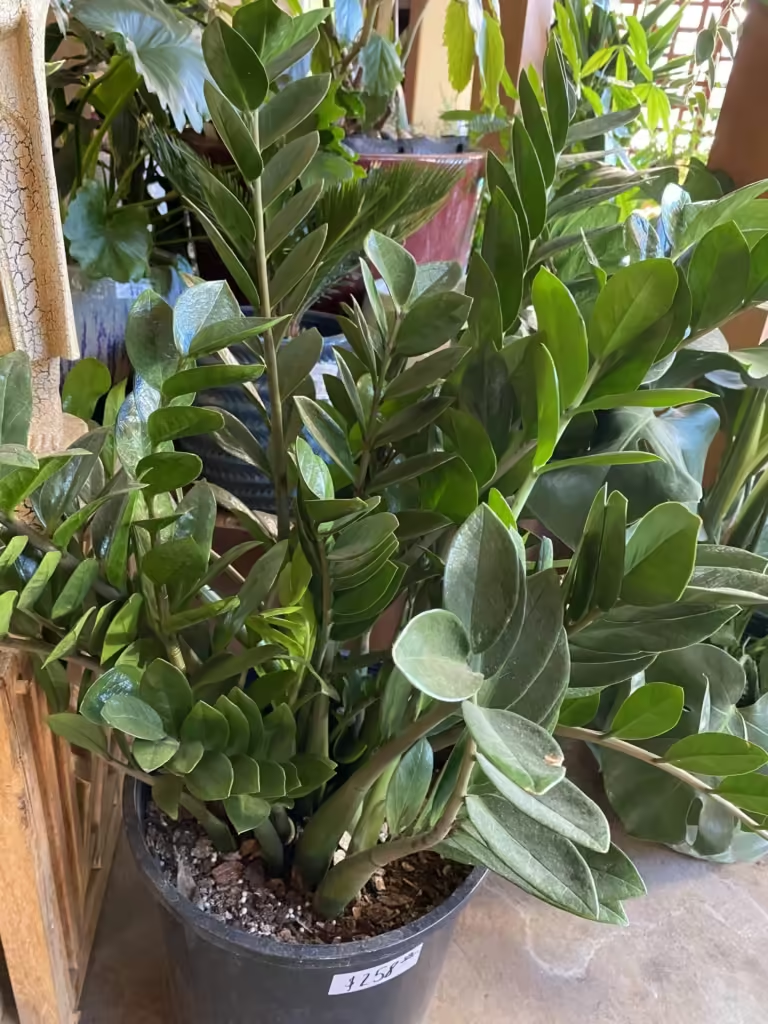
Originating from East Africa, the ZZ Plant features thick, waxy leaves that are a vibrant green. The leaves grow on long, arching stems and have a unique, almost plastic-like appearance, making the plant attractive and easy to care for.
- Sunlight: Low to bright, indirect light
- Humidity: Average home humidity
- Water: Allow soil to dry out between waterings
- Fertilizer: Once a month during the growing season
- Propagation: Leaf cuttings or division
Go here to read more about the ZZ Plant
9. Dieffenbachia (Dumb Cane)
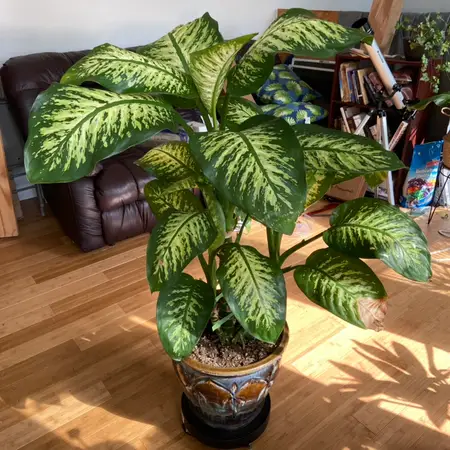
Native to the tropical regions of Mexico and the West Indies, Dieffenbachia is characterized by its large, broad leaves that are often variegated with patterns of green and cream. The leaves are thick and can grow quite large, making a bold statement in any indoor setting.
- Sunlight: Bright, indirect light
- Humidity: Moderate to high humidity
- Water: Keep soil consistently moist but not soggy
- Fertilizer: Every two weeks in spring and summer
- Propagation: Stem cuttings
10. Calathea
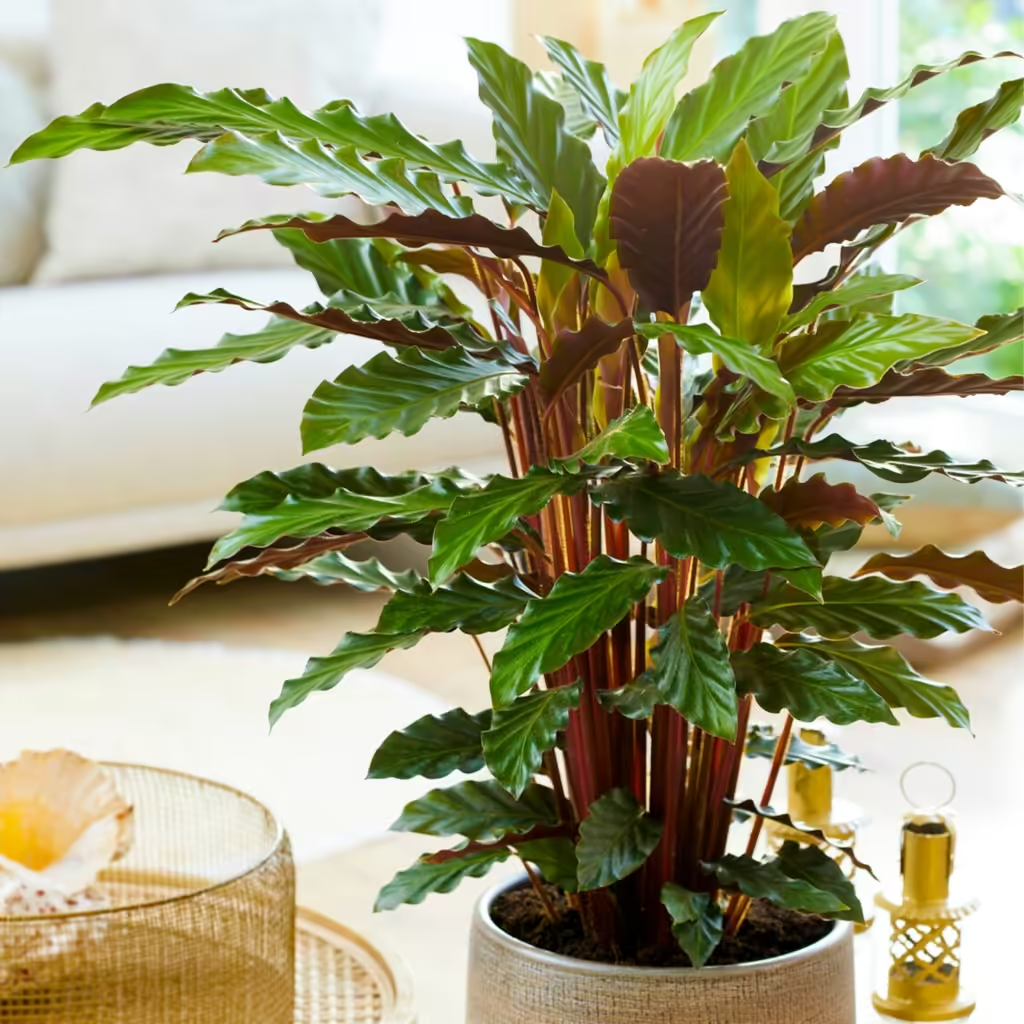
Calatheas are native to the tropical Americas and are known for their stunning, patterned leaves. The large leaves often have intricate designs and can be green, purple, or pink. The undersides of the leaves are usually deep purple, adding to the plant’s visual appeal.
- Sunlight: Bright, indirect light
- Humidity: High humidity
- Water: Keep soil consistently moist
- Fertilizer: Monthly during the growing season
- Propagation: Division
Frequently Asked Questions (FAQs)
Q: How do I know if my plant needs more humidity?
A: If your plant’s leaves are turning brown at the edges, tips, or curling, it may indicate that it needs more humidity.
Q: Can I use tap water to water my indoor plants?
A: While you can use tap water, it’s better to let it sit out 24 hours before use. This allows chlorine and other chemicals to dissipate.
Q: How often should I repot my indoor plants?
A: Repotting is generally recommended every 1-2 years or when roots grow out of the drainage holes, or the plant becomes root-bound.
My Final Word on Indoor Plant Large Green Leaves
Enhance your living space with these stunning indoor plants with large green leaves. They add a touch of nature to your home, improve air quality, and create a calming atmosphere. Start your indoor garden today and experience the joy of nurturing these beautiful plants.

